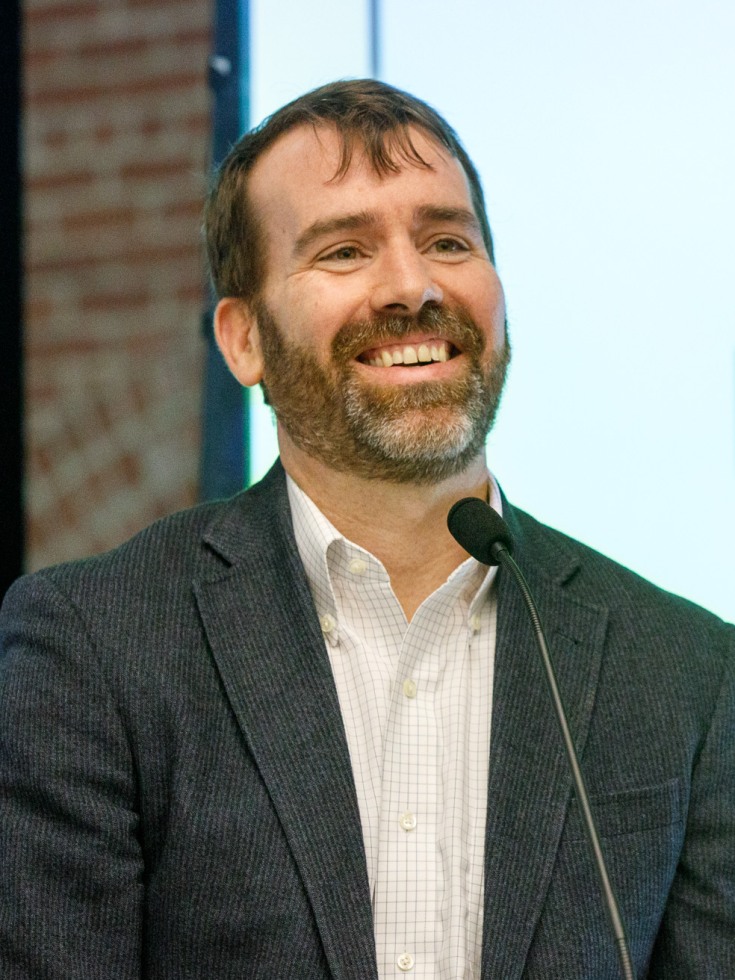New faculty member Andrew Ryan recently published a paper in JAMA, examining the efficacy of a bundled payments program from the Center for Medicare & Medicaid Services (CMS). A national leader in health policy research and training, Professor Ryan comes to Brown from the University of Michigan School of Public Health where he served as director of the Center for Evaluating Health Reform, co-director of the Center for Health Outcomes and Policy, and associate director of the Institute for Healthcare Policy and Innovation’s Data and Methods Hub. We took a few moments to speak with him to hear more about the implications of this study and its findings.
Medicare’s Goldilocks Problem
An Interview with Health Services, Policy and Practice Professor Andrew Ryan
[Medicare] creates the rules of the game. They say to hospitals … ‘Do you want to be part of this? If so, here’s what you need to do to get bonuses and avoid penalties.’

Congratulations on your newly published article in JAMA, Andy. What was the objective of your study?
Medicare has initiated numerous programs to try to increase efficiency and reduce spending. In this evaluation, we studied the impact of Bundled Payment for Care Improvement Advanced (BPCI-A), which provides hospitals with incentives to more carefully manage patients. We found that although the program resulted in a slight reduction in medical-claims spending, this reduction was more than offset by bonuses paid to hospitals. As a result, CMS ended up losing something on the order of $280 million in the program. So we essentially concluded that this program didn’t meet Medicare’s objective of reducing spending and that new payment models are needed.
Does the BPCI-A program improve quality and efficiency in any way?
We found that it did make a minor difference on the order of $180 per episode, which isn’t that much, frankly. When you aggregate those savings over all the admissions, it comes to about $75 million, which again in Medicare terms, is not that much.
Are policymakers aware of the inefficiency of this program?
My overall view is that there is a lot of enthusiasm for many of these alternative payment models. But as more and more of them are evaluated, the enthusiasm has begun to wear off. I think that policymakers are coming around to how hard it is to design voluntary models.
If I may, I have a metaphor to describe the problem here, which is called the goldilocks problem. Basically, CMS creates the rules of the game. They say to hospitals, physician organizations, or other entities, ‘Do you want to be part of this? If so, here’s what you need to do to get bonuses and avoid penalties.’
CMS then sets targets that are attractive enough that hospitals want to join. At the same time, if the targets are too easy to meet, CMS is going to be paying out a lot of bonuses and will end up losing money in the deal. So the targets need to be sufficiently aggressive so that CMS can save money. And getting those targets just right – the goldilocks problem – has proven to be very difficult. I don’t want to say it’s impossible, but it’s almost impossible. It’s very hard to construct a program that gets the targets just right so that people want to be part of it, hospitals want to participate, and CMS still wins. I think that this is becoming clear to CMS.
How do some of our peer economies deal with these issues?
You know, I think in so many ways we’ve decided to go the hard way. Health systems in western Europe are very different. They don’t do the same kind of provider-level incentives. I mean, the UK has some of this but it takes place in the margins. It’s not something that’s really responsible for their spending and quality profiles.
What they do is negotiate much lower prices across the board. And, of course, western European nations don’t have the same public-private mix with their single-payer orientation. The government sets all the prices, and they’re lower.
Another big difference is that the United States tends to be more liberal with regard to the types of procedures, surgeries, and tests that get covered. We tend to use more high technology and new drugs. In some ways, when we’re deciding on what gets covered, we’re thinking about price-per-unit.
There’s a lot of concern about rationing [of care] in our country. As a result, we’ve decided to be not nearly as strict about how we decide to cover new drugs and technologies. Instead of having the government decide on what can be covered and at what price, we put that on the providers. The US essentially says, ‘We’re going to set up all these programs to incentivize providers to figure out how to manage care better.’ That’s just where we are.
I’m not saying none of these programs can work. I just think that Medicare still hasn’t arrived at a set of models that is going to meet its objectives. We still have to work to keep iterating through these strategies.
Read the article in JAMA
Association of Hospital Participation in Bundled Payments for Care Improvement Advanced With Medicare Spending and Hospital Incentive Payments